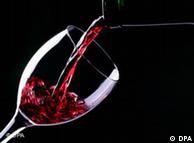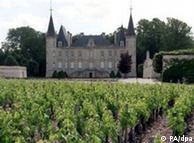2011年 02月 21日 07:28
尋找酗酒基因
數
百萬美國人都痛苦地瞭解到﹐酗酒會在家族中遺傳。
如果父母酗酒﹐他們的孩子產生酗酒問題的可能性將是普通人的四倍。如果父親酗酒﹐兒子酗酒的風險將高達普通人的九倍。研究顯示﹐酗酒者的後代即使從小就被不喝酒的家庭收養﹐其今後產生酗酒問題的可能性也很大﹐基本上同跟生物學父母一起生活差不多。
但 要破解哪種基因攜帶了誘發酗酒問題的遺傳物質是極其困難的——這主要是由於酗酒過程本身非常複雜。影響肝臟代謝酒精速度的基因、影響大腦對壓力、獎勵和快 樂的反應機制的基因均對酗酒有影響﹐影響焦慮和抑鬱的基因也與此有關。某些與酗酒相關的基因還與影響尼古丁癮、可卡因癮和其他成癮症的基因部分重疊。
大約十分之一的美國人在某些時間點﹐符合酒精依賴症的標準——其標準主要是無法戒酒。這其中環境影響和社會壓力也起到了複雜的作用。
印 第安那大學(Indiana University)醫學院的生物化學與分子生物學教授霍華德•J•埃登貝里(Howard J. Edenberg)說﹐你經常會看到有文章說他們找到了與這有關的基因或與那有關的基因﹐但事情很少會這麼簡單。我們並不指望為每種症狀找到一個相應的基 因。埃登貝里博士是美國政府資助的酗酒遺傳學合作研究專案(Collaborative Study on the Genetics of Alcoholism﹐COGA)的四位首席研究員之一﹐該專案從1989年起就開始跟蹤家庭中的酗酒問題。迄今為止﹐COGA的研究人員已經採訪了 14,000多人﹐並取得了262個家庭的DNA樣本。他們發現了證明幾種基因與酒精有關的證據——並越來越確信﹐不同類型的酗酒對應不同的基因變異。
這 樣的進展讓我們看到了在一個領域中取得成功的希望:找出能根據個人DNA圖譜説明治療酗酒的藥物。目前﹐市場上的多數藥物都是為了幫助酗酒者戒掉酒癮﹐但 並不是對每個人都管用﹐而且病人能否配合治療也是一個問題。專家稱﹐如果藥物能針對特定酗酒類型的病人﹐那麼這種情況將會改觀。
《美國精 神病學雜誌》(American Journal of Psychiatry)上個月報導了最早的一項此類研究﹐這項研究發現﹐帶有兩種與神經遞質羥色胺有關的特定變異基因的酗酒者服用昂丹司瓊 (onadansetron)後戒酒效果顯著。這種止吐藥也被稱為樞複寧(Zofran)﹐通常用於輔助癌症治療﹐它可以阻斷羥色胺受體﹐且似乎可以降低 某些酗酒者飲酒後的興奮情緒。
相比之下﹐帶有其他羥色胺受體基因的受試者和服用安慰劑的受試者成功戒酒的幾率較小。
迄今 為止﹐人們發現的與酗酒相關性最強的基因是所謂的“亞洲紅”(Asian flush)。約40%的東亞裔人都攜帶一、兩種可以將酒精迅速轉化為化學物乙醛的變異基因﹐這種物質會導致噁心、心跳加速和大紅臉﹐是一種強力抑制飲酒 物﹐很像戒酒硫(disulfiram)(也稱為安塔布司(Antabuse))這種藥。美國國家防止酒精濫用與酒精中毒研究所(National Institute on Alcohol Abuse and Alcoholism)神經遺傳學實驗室主任大衛•戈德曼(David Goldman)說﹐你甚至不用進行基因測試就能檢測出它。如果你去赴晚宴﹐宴會上的某個人有這種變異基因﹐那麼他喝下一杯酒後就會臉紅。
北卡羅來納大學教堂山分校(University of North Carolina-Chapel Hill)的研究人員初步識別出一種類似的“醉酒基因”﹐帶有這種基因的人只要喝下一、兩杯酒就會感到醉意。10%至20%的人帶有這種變異基因﹐它也被 認為能保護人們免於染上酒精依賴症。
也有些人在喝酒時感覺特別愉快——這可能是由於大腦獎勵回路中神經遞質多巴胺的變異。在許多酗酒者、吸毒者和吸煙者身上都發現了一種DRD2多巴胺受體變異基因。不過後來的研究得出的結論並不一致。
單獨地看﹐約四分之一的人身上都普遍帶有神經遞質神經肽Y受體的兩種與壓力和嚴重戒酒症狀相關的變異基因。很顯然﹐這些人並不都是嚴重的酗酒者。
由於許多情況仍不清楚﹐多數專家並不建議消費者利用基因測試瞭解他們染上酗酒等複雜病症的可能性。
戈德曼博士說﹐即使你知道自己攜帶有某種保護性基因﹐也仍然可能由於一種我們尚未發現的基因而容易酗酒。他還說﹐任何有酗酒家族史的人接觸酒類時都絕對應該謹慎。
埃登貝里博士說﹐查看家族史更簡單、更省錢﹐而且目前它能給你比基因測試更多的資訊。他還強調﹐當涉及到人類行為時﹐DNA決不是決定性因素。他說﹐你可能攜帶有各種導致酗酒的基因﹐但如果你設法推開酒杯或酒瓶﹐那麼就不會染上酗酒問題。
酗酒者的特徵如果你有以下七條症狀中的任何三條﹐那麼你就符合酒精依賴症的標準:
——比最初設想的喝得更多或更久
——無法停止喝酒或無法戒酒
——跟他人相比﹐需要喝更多的酒才能產生相同的效果
——不喝酒時有戒酒症狀
——喝酒或恢復清醒所花的時間越來越長
——由於喝酒忽視了其他活動
——繼續喝酒而不顧負面後果
美國國家防止酒精濫用與酒精中毒研究所(National Institute on Alcohol Abuse and Alcoholism)稱﹐現在約5%的美國人符合該標準﹐超過10%的美國人在某些時間點符合該標準。
資料來源:《精神疾病診斷與統計手冊》(The Diagnostic and Statistical Manual of Mental Disorders)Melinda BeckIn Search Of Alcoholism Genes
Millions of Americans know all too painfully that alcoholism runs in families.
Children of alcoholic parents are four times as likely to develop drinking problems as the general population. Sons of alcoholic fathers face up to nine times the usual risk. Even babies of alcoholics adopted into non-drinking homes have nearly the same risk of alcoholism as they would if they'd stayed with their biological parents, studies have shown.
But untangling just which genes pass along the predisposition for problem drinking is devilishly difficult -- largely because alcoholism itself is so complex. Genes that affect how fast the liver metabolizes alcohol and how the brain reacts to stress, reward and pleasure have all been implicated, as have genes for anxiety and depression. Some overlap with genes for nicotine, cocaine and other addictions.
About one in 10 Americans fit the criteria for alcohol dependence -- mainly the inability to cut down -- at some point in their lives. Environmental influences and social pressures also play complicated roles.
'All too often, you read that they've found a gene for this and a gene for that, and it's very rarely that simple. We don't expect to find a single gene in everyone,' says Howard J. Edenberg, a professor of biochemistry and molecular biology at the Indiana University School of Medicine. Dr. Edenberg is one of four principal investigators in the government-funded Collaborative Study on the Genetics of Alcoholism (COGA), which has been tracking alcoholism in families since 1989. To date, COGA researchers have interviewed more than 14,000 people and sampled the DNA of 262 families. They've found evidence for several alcohol-related genes -- and are increasingly convinced that different types of alcoholics reflect many genetic variations.
That idea is already showing promise in one area: identifying drugs that can help treat alcoholics based on their individual DNA profile. Most of the drugs currently on the market aim to cut alcohol cravings but don't work on everyone and compliance is a problem. That could change, experts say, if drugs could be targeted to patients with specific types of alcoholism.
In one of the first such studies, reported in the American Journal of Psychiatry last month, alcoholics with two specific variations of a gene related to the neurotransmitter serotonin were able to cut their alcohol consumption significantly using the drug onadansetron. The anti-nausea drug often used with cancer treatments, also known as Zofran, blocks serotonin receptors and seems to diminish the buzz some alcoholics get from drinking.
Subjects with different versions of the serotonin-receptor genes and those taking a placebo had less success cutting down.
The strongest gene associations found to date involve the so-called Asian flush. Roughly 40% of people of East Asian descent carry one or two gene variations that rapidly convert alcohol into the chemical acetaldehyde, which causes nausea, rapid heart beat and a severe flush. It's a strong deterrent to drinking, much like the drug disulfiram, or Antabuse. 'You don't even need a genetic test to detect it,' says David Goldman, chief of the Laboratory of Neurogenetics at the National Institute on Alcohol Abuse and Alcoholism. 'If you have a dinner party and somebody has this variation, they'll turn red when they drink a glass of wine.'
Researchers at the University of North Carolina-Chapel Hill have tentatively identified a similar 'tipsy gene' that makes carriers feel inebriated after just one or two drinks. Between 10% and 20% of the population has this variation, which is also thought to protect against becoming alcohol-dependent.
Other people feel especially euphoric when they drink -- probably due to variations in the neurotransmitter dopamine in the brain's reward circuits. A variation in the DRD2 dopamine receptor gene was found in a large number of alcoholics as well as drug addicts and smokers, although later studies have been mixed.
Separately, variations in two genes for receptor to neurotransmitter neuropeptide Y, associated with stress and severe withdrawal symptoms from alcohol, are common to about one-quarter of the population. Clearly, not all those people are severe alcoholics.
So much is still unknown that most experts don't advise consumers to use genetic-testing services to try to understand their risk for complex conditions like alcoholism.
'Even if you learn you have a protective version of some gene, you could still be vulnerable due to a gene we haven't discovered yet,' says Dr. Goldman, who adds that anyone with a family history of alcoholism should definitely approach alcohol with caution.
'Looking at your family history is simpler, cheaper and at the moment, gives you more information than a genetic test,' says Dr. Edenberg. He also stresses that DNA is never destiny when human behavior is involved. 'You can carry all kinds of genes, and if you manage to push away the glass or the bottle, you won't have an alcoholism problem.'
Who Is an Alcoholic?If you've done any three of these seven, you meet the criteria for alcohol-dependent:
-- Drunk more or longer than you intended
-- Been unable to stop or cut down
-- Needed more alcohol to get the same effect
-- Had withdrawal symptoms without it
-- Spent an increasing amount of time drinking or recovering
-- Neglected other activities due to drinking
-- Continued to drink despite negative consequences
About 5% of Americans currently meet the criteria, and more than 10% do at some time in their lives, according to the National Institute on Alcohol Abuse and Alcoholism.
Source: The Diagnostic and Statistical Manual of Mental Disorders
Melinda Beck




